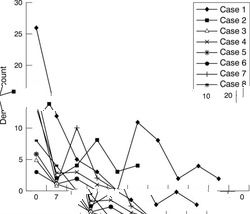Solution for hair mite which lives in human hair follicles!
Most individuals with thin-looking hair have hair mites living in their hair and on their skin. These microscopic parasites may be linked to thinning hair, acne, and other skin conditions.
Many people don't like the idea of parasites living in their hair or on their skin, and some get really bent out of shape just thinking about it.
For some people, it's enough to make their skin crawl. And bathing won't wash them off. Known as the hair mite, the parasite lives in the hair follicles of people and feeds on oils, hormones, and fluids around the follicle. These itty-bitty bugs can initiate a variety of problems. When something causes the mites to reproduce at a higher rate, they can break out of the hair follicle and may hair loss, cause acne and various skin conditions. In some cases, the interaction with Demodex mites causes skin to actually slough off.
Studies show the Demodex hair mite to be associated with numerous types of skin complications. While mites may cause certain problems, it also is possible specific skin conditions become a breeding ground for Demodex mites. Besides, it's a major problem for dogs too. If you have high revels of hormones, you're going to have high levels of Demodex mite reproduction because these invertebrate insects obtain their steroids from the host.
Demodex hair mite poses the biggest threat to people under stress or those with cancer or other conditions such as HIV/AIDS that suppress the immune system. Demodex hair mite colonies can spread unchecked because patients cannot produce the antibodies needed to control the parasites. Under normal conditions, hair mites produce an antigen when they feed in a hair follicle, and then the human body makes antibodies against the parasites, thereby keeping their reproduction low and in balance.
Demodex hair mites feed continuously inside the hair follicle. Three to five days are required for egg laying and hatching, followed by one week for the larvae to develop into adults. Their total life span is around one to three months. They are transferred from host to host by contact, particularly in hair and face.




